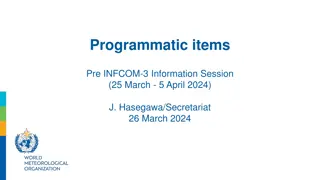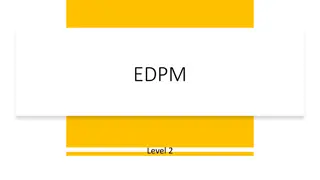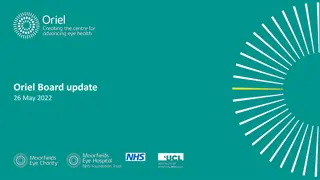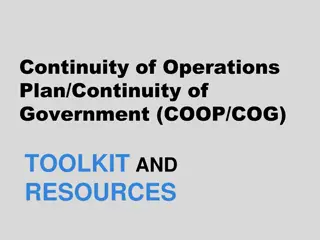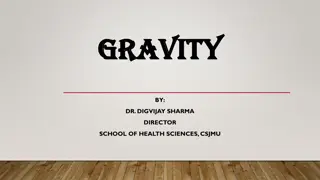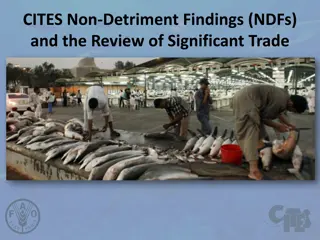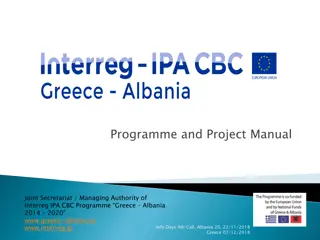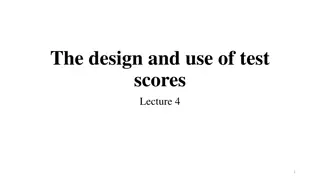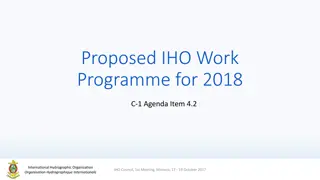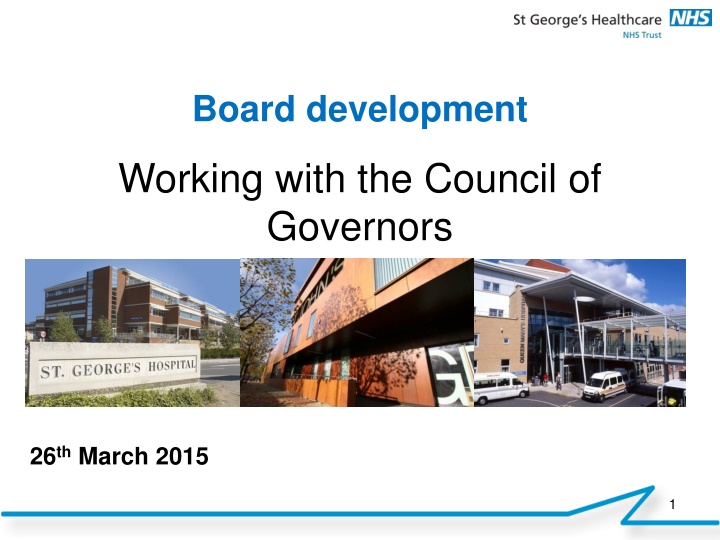
Role and Duties of Council of Governors in Governance Models
Discover the essential role and statutory duties of the Council of Governors within governance models for NHS foundation trusts. Learn about their responsibilities, powers, and interaction with the Board of Directors to ensure effective organizational oversight and accountability.
Download Presentation

Please find below an Image/Link to download the presentation.
The content on the website is provided AS IS for your information and personal use only. It may not be sold, licensed, or shared on other websites without obtaining consent from the author. If you encounter any issues during the download, it is possible that the publisher has removed the file from their server.
You are allowed to download the files provided on this website for personal or commercial use, subject to the condition that they are used lawfully. All files are the property of their respective owners.
The content on the website is provided AS IS for your information and personal use only. It may not be sold, licensed, or shared on other websites without obtaining consent from the author.
E N D
Presentation Transcript
Board development Working with the Council of Governors 26th March 2015 1
Working with governors Purpose: The purpose of this session is to: Introduce the Board members to the role of governors and their statutory duties Agree proposals for how the board and council interact 2
The governance model for FTs Becoming an FT means a new governance model, a concept based on local accountability : A membership community made up the public, patients, their carers and trust staff A Council of Governors elected from the membership community and staff plus stakeholders appointed from key partner organisations, to work closely with the trust in developing the overall strategic direction, and holding the Board of Directors to account. A Board of Directors operationally accountable for delivering the trusts strategy and objectives. 3
The role of a governor Statutory duties / powers 5
Governors duties / powers Statutory roles and responsibilities of the council of governors Additional powers In preparing the NHS foundation trust s forward plan, the board of directors must have regard to the views of the council of governors Appoint and, if appropriate, remove the chair; Appoint and, if appropriate, remove the other non-executive directors; Decide the remuneration and allowances and other terms and conditions of office of the chair and the other non-executive directors; Approve (or not) any new appointment of chief executive Appoint and, if appropriate, remove the NHS foundation trust s auditor; Receive the NHS foundation trust s annual accounts, any report of the auditor on them, and the annual report at a general meeting of the council of governors 2006 Act The council of governors may require one or more of the directors to attend a council meeting to obtain information about performance of the trust s functions or the directors performance of their duties, and to help the council to decide whether to propose a vote on the directors performance; Hold the non-executive directors, individually and collectively, to account for the performance of the board of directors; Represent the interests of the members of the trust and the interests of the public; Approve significant transactions ; Approve an application by the trust to enter into a merger, acquisition, separation or dissolution; Decide whether the trust s non-NHS work would significantly interfere with its principal purpose, to provide goods and services for the health service in England, or performing its other functions; Approve amendments to the trust s constitution Amendments by the 2012 Act 6
Governors duties / powers by theme (1) See Appendix A for details Appointments and terms and conditions Process Appoint and, if appropriate, remove the chair; Appoint and, if appropriate, remove the other non-executive directors; Decide the remuneration and allowances and other terms and conditions of office of the chair and the other non-executive directors; Approve (or not) any new appointment of chief executive Appoint a deputy chairman and Senior Independent Director; Appoint a Lead Governor; Appoint and, if appropriate, remove the NHS foundation trust s auditor; Council of Governors meeting February 2015 & April 2015 7
Governors duties / powers by theme (2) See Appendix B for details Annual planning / reporting Process In preparing the NHS foundation trust s forward plan, the board of directors must have regard to the views of the council of governors Approve significant transactions ; Approve an application by the trust to enter into a merger, acquisition, separation or dissolution; Decide whether the trust s non-NHS work would significantly interfere with its principal purpose, to provide goods and services for the health service in England, or performing its other functions; Council of Governors meeting April 2015 Receive the NHS foundation trust s annual accounts, any report of the auditor on them, and the annual report at a general meeting of the council of governors Council of Governors meeting July 2015 8
Governors duties / powers by theme (3) See Appendix C for details Holding to account / representing the interests of the membership Additional powers Hold the non-executive directors, individually and collectively, to account for the performance of the board of directors; Council of Governors meeting July 2015 (appraisals) and ongoing The council of governors may require one or more of the directors to attend a council meeting to obtain information about performance of the trust s functions or the directors performance of their duties, and to help the council to decide whether to propose a vote on the directors performance; Represent the interests of the members of the trust and the interests of the public; Approve amendments to the trust s constitution Ongoing 9
Fulfilling governors duties / interests Board / Council engagement 10
Council sub-committees Guidance: The Council of Governors cannot delegate authority to sub-committees, but can establish advisory groups to formulate recommendations for consideration by the Council. One group already established is the Nominations and Remuneration committee. The remit of this committee includes: Nomination and recruitment arrangements for the appointment of non-executive directors and the chairman; Establishing the remuneration, allowances and other terms and conditions of office for that appointment Setting the arrangements for annual appraisal and performance assessment of chairman and non- executive directors As well as the Nominations and Remuneration committee, the Council may wish to establish working groups to support the Council and provide an opportunity for governors to add value in specific areas. The Council cannot delegate its duties and therefore any group must be advisory to the Council. It is for the Council to determine which groups to establish. Best practice points to fewer, more focused groups. Examples of types of groups established for non-statutory duties include: Quality Membership strategy and engagement 11
Board / Council engagement In thinking about how the Board engages with the Council and governors, we should consider some guiding principles: Governors want to be engaged and to be helpful Governors have got experience and skills which we should use Avoid duplication of work wherever possible Governors have statutory duties that need to be fulfilled Both board members and governors have different roles But have similar goals and interests the patient Board of Directors development needs Council of Governors development needs Joint working 12
Board / Council engagement In designing a programme of engagement that meets these principles and both parties needs, we may consider a mixed model of engagement methods. There are several existing opportunities: Board of Directors meetings monthly Board of Directors board development sessions every two months Board of Directors strategy sessions every two months Board sub-committee meetings (e.g. QRC meetings & seminars, F&P, Workforce) monthly Council of Governors meetings - quarterly The proposal is that we use the range of these opportunities for both parties: Specific sessions for Board members Specific sessions for governors (Council meetings or seminars) Joint seminars including Board and Council Observation of Board and Board sub-committees 13
Board / Council engagement A proposed programme, based on topics of interest raised so far by governors: Topic Topics raised by governors as areas of interest: Finance understanding NHS finances and the trust s financial plan Staff experience staff survey results and bullying and harassment Understanding mortality data Aligning / triangulating data patient and staff experience Outpatients patient experience How do we deliver the values and customer care? Proposed approach Additional Council of Governors workshop (April 2015?) Joint seminar at Board development session (May 2015) (or Workforce committee seminar?) Joint board development session (July 2015) Joint board development session (July 2015) Joint board development session (September 2015) Joint board development session (September 2015) Learning from complaints / incidents / patient feedback Community / Public health Partnerships in health external relationships and how they support the delivery of quality Equality training / awareness Workforce planning and profile Annual planning draft annual plan Joint QRC seminar (October 2015) Council of Governors workshop (November 2015) Council of Governors workshop (November 2015) Joint board development session (January 2016) Joint board strategy session (February 2016) Joint board strategy session (February 2016) 14
Board / Council engagement Attendance / observation of board sub-committees: Why the need? Enables governors to hold the non-executives to account observing them in their role as chair / members of board sub-committees How would it work? Attendance in capacity as observer, not participant though allowed to ask questions at the end at chair s discretion Maximum attendance at two meetings per year per governor per committee Committees limited to: Quality and Risk Committee Workforce Committee Finance and Performance Committee May need to have two parts to committee meetings to enable confidential discussions, if required 15
Statutory duties Appendix A: Appointments 16
Appointing the Chair and NEDS Guidance: The 2006 Act requires that an NHS foundation trust has non-executive directors. In making appointments, the governors must consider relevant aspects of the trust s constitution and the Code of Governance, such as: the requirements of the NHS foundation trust s constitution concerning the number of non- executive directors; the independence of non-executive directors; the balance of skills across the Board; The composition of executive and independent non-executive directors Provisions: Trust constitution: 26.1 The Council of Governors, at a general meeting [ ] shall appoint or remove the chairman of the trust and the other non-executive directors 27.1 The Council shall appoint the chairman of the applicant trust as the initial chairman of the trust, if he/ she wishes to be appointed 27.2 The power of the Council to appoint the other non-executive directors of the trust is to be exercised, so far as possible, by appointing as the initial non-executive directors of the trust any of the non-executive directors of the applicant trust who wish to be appointed 27.4 An individual appointed as the chairman or as the initial non-executive director shall be appointed for the unexpired period of his/her term of office but if, on appointment, that period is less than 12 months, he / she shall be appointed for 12 months. 17
Appointing the Chair and NEDS Council of Governors resolution, meeting 10th February: To appoint the chairman and non-executive directors, for terms set out below Non-Executive Directors Chair Non-Executive Non-Executive Non-Executive Non-Executive Non-Executive Non-Executive (University) Appt. from 01/11/2011 01/09/2004 29/12/2010 01/01/2013 01/01/2013 01/02/2014 30/09/2014 To 01/02/2016 01/02/2016 01/02/2016 01/02/2017 01/02/2017 01/02/2017 30/09/2018 Term 1 3 2 1 1 1 2 Christopher Smallwood Michael Rappolt Sarah Wilton Judith Hulf Stella Pantelides Kate Leach Peter Kopelman Subsequent appointments For each appointment, the Nominations and Remuneration Committee will convene to: Recommend to the Council of Governors approach to appointment (i.e. open competition or re- appointment) Agree a job description and person specification defining the role and capabilities sought Form the interview panel, including: Chairman Three governors, one of whom is an appointed governor Independent external assessor where appropriate Make a recommendation to the Council of Governors for approval of the appointment 18
Deciding the remuneration and terms of office Guidance: It is for the council of governors to decide the remuneration and allowances, and other terms and conditions of office, of the non-executive directors (2006 Act). (The remuneration of the chief executive and executive directors is decided by the non-executive directors.) Provisions: Trust constitution: 35.1 The Council at a general meeting shall decide the remuneration and allowances, and the other terms and conditions of office, of the chairman and the other non-executive directors Council of Governors resolution, meeting 10th February: For the Council s Nomination and Remuneration Committee to recommend to the Council on 2nd April an initial remuneration for chairman and non-executive directors 19
Approve the appointment of Chief Executive Guidance: The non-executive directors, including the chair, are responsible for appointing or removing the NHS foundation trust s chief executive. The Council of Governors can decide whether or not to approve the appointment of the Chief Executive. However the initial appointment of the chief executive, if the same as the chief officer of the applicant NHS trust, does not need Council approval. Provisions: Trust constitution: 29.1 The non-executive directors shall appoint or remove the chief executive 29.2 The appointment of the chief executive shall require the approval of the Council 30.1 The non-executives shall appoint the chief officer of the applicant NHS trust as the initial chief executive of the trust, if he / she wishes to be appointed. 31.1 The appointment of the chief officer of the applicant trust as the initial chief executive of the trust shall not require the approval of the Council Council of Governors resolution, meeting 10th February: To note the appointment of the initial chief executive. 20
Agree the appointment of Deputy Chair and Senior Independent Director Guidance: Role of the Deputy Chair One of the NEDs should be appointed by the Board of Directors who deputises for the chair as and when appropriate. Role of the Senior Independent Director One of the NEDs should be appointed by the Board of Directors as the Senior Independent Director (SID). The role of the SID is to act as the point of contact with the board of directors if governors have concerns which approaches through normal channels have failed to resolve or for which such approaches are inappropriate. For example, as the board of directors contact when the Council discuss chair s appraisal or remuneration. Provisions: Trust Constitution: 28. The Council of Governors at a general meeting of the Council of Governors shall appoint one of the non-executive directors as a deputy chairman. Monitor guide: The appointment [of the SID] should be made in consultation with the council of governors Council of Governors resolution, meeting 10th February: To confirm existing deputy chairman and SID Mike Rappolt 21
Appoint the Lead Governor Guidance role of the lead governor: Monitor requires all NHS FTs to nominate a lead governor The lead governor has the same level of authority as other governors, but provides a channel for communication between the governors and Monitor in the event that either body has significant concerns about the leadership of the trust that it has not been possible to address through the Chairman and board of directors. Provisions: The role of the Lead Governor is detailed in Appendix B of the Code of Governance. Council of Governors resolution: The Council of Governors have elected the lead governor Kathryn Harrison 22
Appointment and, if appropriate, removal of the trust s auditor Guidance: The 2006 Act states that every NHS foundation trust must have an auditor, appointed by the Council of Governors. The scope of this includes external audit function only. Governors must select the auditor and monitor the performance of the auditor, but are supported in this task by the Board of Director s Audit Committee the Audit Committee provides information to the Council on the auditor s performance, as well as monitoring the internal audit function. Provisions: Trust constitution: 39.2 The Council shall appoint or remove the auditor at a general meeting of the Council of Governors Code of Governance: The audit committee should report to the Council, identifying any matters relating to the external auditor where it considers that action or improvement is needed and recommending steps to take. Process: Initial confirmation by the Council of the appointment of the current auditors at the first meeting; An annual report from audit committee to the Council when the annual audit is completed; the report should assess whether the auditor s work is of sufficiently high standard and fees are reasonable; The audit committee must make a recommendation to the Council on retaining or removing the auditor, for consideration by the Council; The end of the existing auditor s contract term will also trigger a new appointment process (the trust s current auditor s contract expires in 2017). 23
Statutory duties Appendix B Annual planning and reporting 24
Council involvement in preparing a forward plan Provisions: The 2006 Act requires NHS foundation trusts to submit forward plans to Monitor each financial year. In preparing the forward plan, directors must have regard to the views of the Council. This means that governors should have the opportunity to discuss the plan, but can be implemented without approval. Process: Need to develop business planning process for 2016/17, to include input from Council of Governors For 2015/16, presenting the draft annual plan to the Council of Governors on 2 April feedback from that to the Board when the Board considers the plan at the end of April. 25
Approve significant transactions, mergers, and acquisitions Provision: Under the 2006 Act, more than half of the members of the full Council of the trust must approve: The trust entering into any significant transaction This is defined in the trust constitution as: If the assets which are subject of the transaction exceed 25% of the fixed assets of the trust; If, followed the completion of the relevant transaction, the gross income of the trust will increase or decrease by more than 25%; If, the gross capital of the business which is the subject of the transaction represents more than 25% of the capital of the trust following completion. Any application by the trust to merge with or acquire another trust, separate the trust into two or more new NHS foundation trusts or to be dissolved. Process: Any proposal in regard to these transactions will be discussed with the Council as and when they arise 26
Decide whether the trusts non-NHS work would significantly interfere with its principal purpose Provision: The 2006 Act obliges NHS foundation trusts to ensure that the income they receive from providing goods and services for the health service (their principal purpose) is greater than their income from the provision of goods and services for any other purposes (non-NHS income) NHS foundation trusts are obliged to publish, in their forward plans, information about activities other than the principal purpose and the income it expects to receive from doing so. The Council must decide whether it is satisfied that carrying out that activity will not to any significant extent interfere with the trust s fulfilment of its principal purpose. The 2006 Act also requires that the Council must approve proposals to increase by 5% or more the proportion of its total income in any financial year attributable to non-NHS income. (For example, the Council will be required to approve plans to increase non-NHS income from 2% to 7% or more of the trust s total income). Process: Any proposals for an increase in non-NHS income would be discussed with the Council as part of the forward planning process. 27
Receive the trusts annual accounts Guidance: The Council will need to receive a range of reports during the year to be kept informed about the performance of the trust. The documents which the Council must receive include: The annual accounts Any report from the auditor on the accounts The annual report Monitor s NHS Foundation Trust Annual Reporting Manual states that these documents should be presented at the annual general meeting of the Council. The council of governors must understand the information in these documents, for example, on the performance of the chair or the other non-executive directors. This will ensure it has fulfilled its other statutory duties, for instance, to provide informed feedback to the board of directors and to inform external stakeholders (including any that they represent) on how the NHS foundation trust is performing Process: The Board of Directors must formally approve the annual report and accounts prior to them being laid before Parliament (May 2015). Then to be presented to the Council at the annual members meeting (July 2015) 28
Statutory duties Appendix C Holding to account / representing the membership 29
Holding the NEDs to account Provisions: Governors have a statutory duty to hold the non-executive directors, individually and collectively, to account for the performance of the board of directors. The council of governors may require one or more of the directors to attend a council meeting to obtain information about performance of the trust s functions or the directors performance of their duties, and to help the council to decide whether to propose a vote on the directors performance. Approach: There are a range of methods or activities that governors might undertake in seeking to hold the non- executive directors to account, including: Receiving regular performance information Invite non-executive chairs of Board sub-committees to Council meetings as appropriate and use these opportunities to ask them questions. Observation of board and board sub-committee meetings The Council will also be involved in and receive information from annual appraisals of the chairman and non-executive directors. For appraisal of non-executive directors: Chairman conducts annual appraisals with non-executive directors and reports to the Council For appraisal of the chairman: The process of appraisal is led by the SID, involving governors in the process The outcome of the evaluation should be discussed and agreed at the Council 30
Represent the interests of Members and the public Provision: Under the 2006 Act governors have a duty to represent the interests of the members of the NHS foundation trust and the public. Key principles include: Governors should seek the views of members and the public on material issues or changes being discussed by the trust; Governors should feed back to members and the public information about the trust, its vision, performance and material strategic proposals; Governors should try to make sure when they are communicating with directors of the trust that they represent the interests of members and the public rather than just their personal views. How will this work? Governor drop-in days where Members and the public can meet with Governors, for example as at the Community Open Day Members events where Governors would be available to meet with Members and the public e.g. Medicine for Members programme Membership satisfaction surveys these could go out once or twice a year with the Membership newsletter (Gazzette or Members Update) Email accounts set up for governors for members to contact governors. Developing pop-up banner with how to contact the governors details. 31
Amending the constitution Guidance: The trust constitution has been approved by the Board of Directors and Monitor. The Council of Governors may approve amendments to the constitution, following approval by the Board of Directors. Provision: Trust constitution: 45.1 the trust may make amendments to its constitution only if: More than half of the members of the Council of Governors voting approve the amendments; and More than half of the members of the Board of Directors of the trust voting approve the amendments. 32


